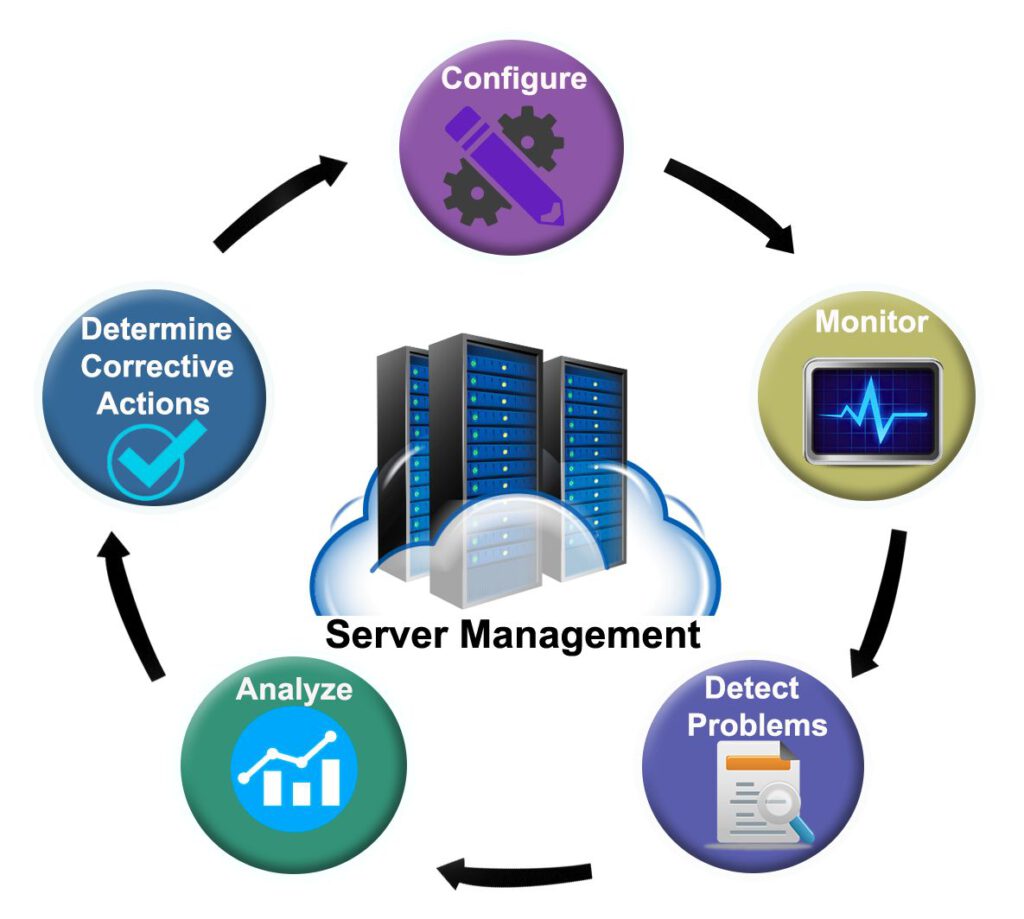
Email Eddie
How can we help?
Whether you're looking for expert ITSM consulting, cutting-edge technology solutions, award-winning training courses, or hands-on IT support, explore our website and use the search box to easily find the resources, insights, and services you need.
Server Management

Servers are used in the most organisation to provide flexible and accessible services from hosting applications or databases, running client/server services, storage, Print and File Managment. Succesful management of servers is therefore essential for Succesful Service Operation. The procedures and activities which must be undertaken by the Server Team(s) or department(s) – separate teams may be needed where different server-types are used (UNIX, Wintel etc) -Include.
- Operating system support: Support and maintenance of the appropriate operating systems(s) and related utility software (e.g failover software) including patch management and involvement in defining backup and restore policies.
- License Management: For all server CIs, especially operating systems, utilities and any application software not managed by the Application Management teams.
- Third-level support: Third-level support for all server and/or server operating system related incidents, including diagnosis and restoration activities. This will also include liaison with third-party hardware support contractors and/or manufacturers as needed to escalate hardware-related incidents.
- Procurement advice: Advice and guidance to the business on the selection, sizing, procurement and usage of servers and related utility software to meet business
- System Security: Control and maintenance of the access controls and permission within the relevant server environments as well as appropriate system and physical security measures. These include identification and application of security patches, Access Management, and intrusion detection.
- Definition and Management of virtual servers: This implies that any server that has been designed and built around a common standard can be used to process workloads from a range of applications or users. Server Management will be required to set these standards and then ensure that workloads are appropriately balanced and disturbed. They are also responsible for being able to track which workload is being processed by which server so that they are able to deal with incidents effectively.
- Capacity Management and performance: provide information and assistance to Capacity Management to help achieve optimum throughput, utilization, and performance from the available servers. This is discussed in more detail in Service Design but includes providing guidance on, and installation and operation of, virtualization software so as to achieve value for money by obtaining the highest levels of performance and utilization from the minimal number of servers.
- Routine Activities: – Defining standard builds for servers as part of the provisioning process. – Building and installing new servers as part of ongoing maintenance or for the provision of new services. – Setting up and managing clusters, which are aimed at building redundancy, improving service performance and making the infrastructure easier to manage.
- Ongoing maintenance: This typically consists of replacing servers or ‘blades’ on a rolling schedule to ensure that equipment is replaced before it fails or becomes obsolete. This results in servers that are not only fully functional but also capable of supporting envolving services.
- Decommissioning and disposal of old server equipment: This is often done in conjunction with the organisations environmental policies for disposal.

Case studies

Growth powered by Pink Elephant’s SIAM IT Service Desk
Corplex (formerly DS Smith Plastics, Extruded Products) is a leading manufacturer of innovative reusable packaging. With a history spanning 50 years, Corplex rebranded in 2020 after being acquired by Olympus Partners. The company is dedicated to sustainability and excellence, establishing itself as a trusted name in the Reusable Transport Packaging...

Bespoke Customer Service training programme for GTT
Pink Elephant EMEA builds on the success of a GTT’s customer service offering with a bespoke virtual training programme. Find out more below about the objectives, challenges, and successes of delivering a training programme to 250+ GTT employees, in three countries, across three time zones. Find Out More about Customer...

AON optimises ITSM and UX
Aon PLC, a leading British-American multinational professional services firm, offers a wide range of financial risk-mitigation products, including insurance, pension administration, and health insurance plans. To continue delivering exceptional service across its global operations, Aon sought to transform its IT Service Management (ITSM) practices and enhance the user experience. The...